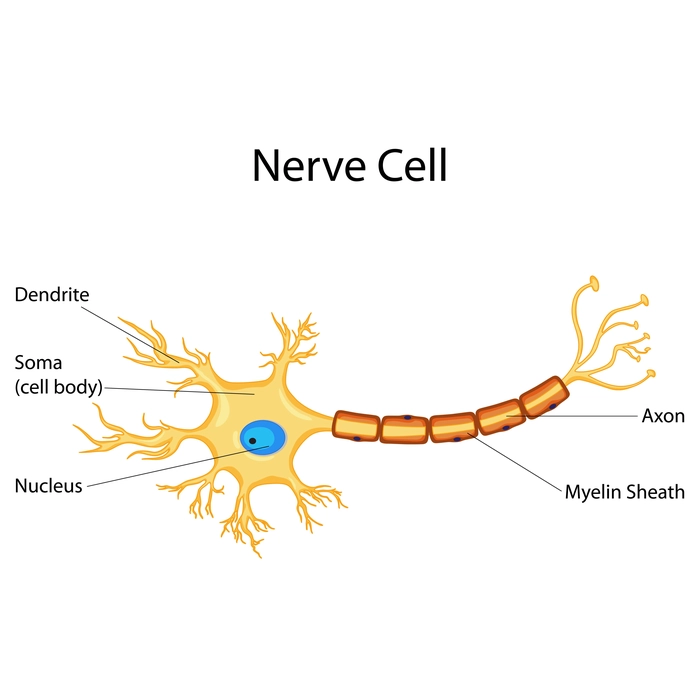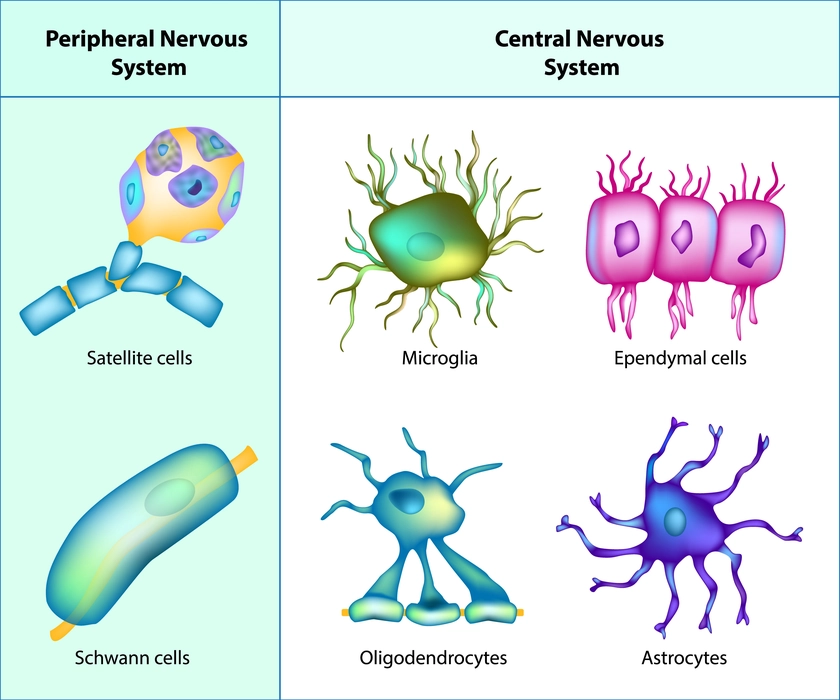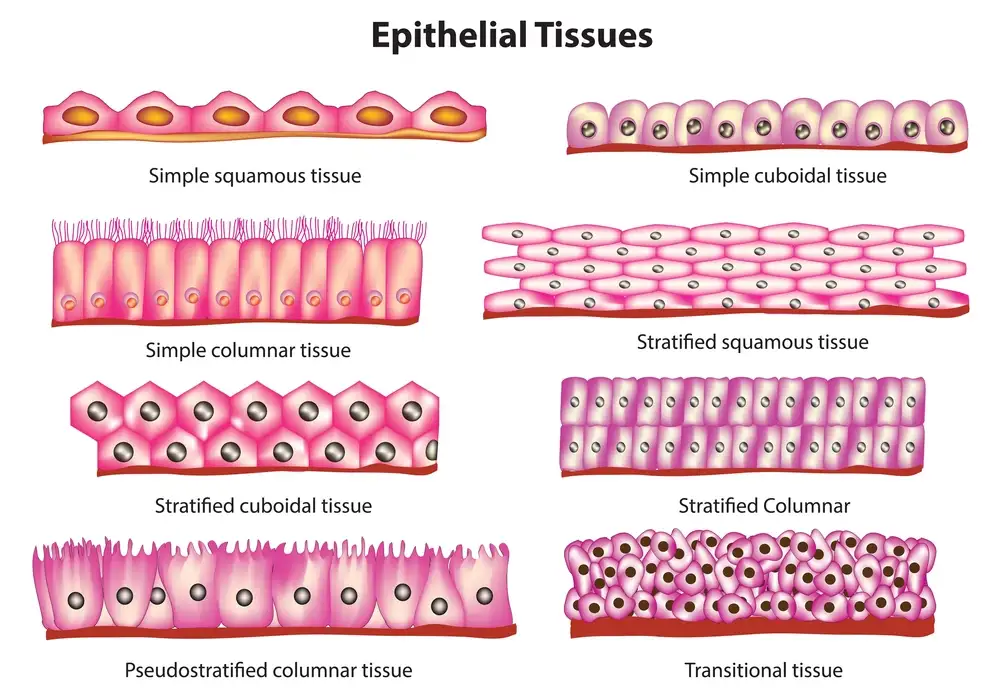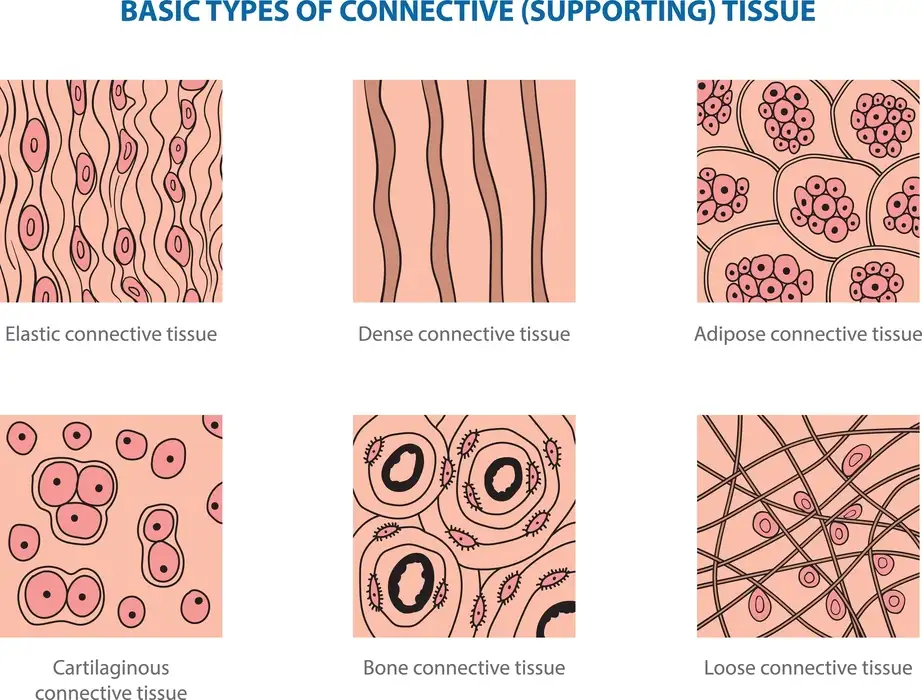Introduction
The essential building blocks of living things are cells. There are billions of cells that make up the human body. A group of specialized cells which perform one or more similar functions are referred to as a tissue. They combine to produce several organs, such as the skin, kidney, lungs, liver, and heart. An organ system is made up of two or more organs that perform the same tasks. Each of these contributes to the overall body’s survival.
Types of animal tissues
Animal tissues are classified into four kinds based on their origins, structures, and functions. Animal tissues are of the following types-
- Muscular tissues
- Nervous tissues
- Epithelial tissues
- Connective tissues
Muscular tissue
Muscular tissue, which is considerably longer and has the ability to contract and expand, which causes motion. These tissues have a lot of blood vessels since they help in activities like running, walking, swimming etc.
Features of Muscular tissues
- Muscular tissues contract in response to stimuli to produce motion.
- They can be stretched more than their length.
- These tissues are elastic in nature because they can expand and then contract to their original length.
- They can adapt to their surroundings.
Types of Muscular Tissues

| Types | Location | Function |
| Cardiac muscle | Heart | Continuous blood pumping |
| Skeletal muscle | Skeletal bone | Movement |
| Smooth muscle | Eyes, uterus, blood vessels, and digestive tract | Maintain blood flow and blood pressure |
Nervous tissues
Nervous tissues make up the central nervous system (CNS) and peripheral nervous system (PNS). By sending nerve impulses, the neural or nervous tissue is in charge of control and coordination of numerous bodily functions. The spinal cord, the brain, and the nerves are part of nervous system and that stimulate muscle contraction and regulate emotions, memory, and reasoning.
Neurons
Axon, dendrites, and cell bodies make up a neuron, and they are responsible for transmitting and receiving signals throughout the body.

Types of neurons– According to their functions, neurons can be divided into the following types:
- Sensory neurons– Short axons and lengthy dendrites are characteristics of unipolar sensory neurons. They are also referred to as afferent neurons since they transport action potential from the sensory receptor to the CNS and brain.
- Motor neurons– Motor neurons are multipolar and operate as efferent neurons because they transport the action potential from the central nervous system to activate muscles.
- Associated neurons-Associated neurons help the brain learn, make decisions, and regenerate new neurons. They are multipolar neurons which connect sensory and motor neurons.
Neuroglial cells
It is responsible for supporting and maintaining the nervous system and they are of following types-Astrocytes, Ependymal cells, Microglial cells, Oligodendrocytes, Satellite cells and Schwann cells.

Epithelial tissues
All of the body’s inner and outer surfaces are lined and covered with epithelial tissue. The cells form single or several layers and are tightly packed together.
Features of Epithelial Tissues
- Without intercellular gaps, cells are tightly grouped together to form a sheet.
- Gap junctions, tight junctions, and adherent’s junctions connect the cells.
- Despite being non-vascular, or lacking a blood supply, these are innervated (supply nerves to organs or parts of the body).
- These tissues regenerate rapidly.
- Although they lack a blood supply, they receive nutrition from substances that diffuse from the blood vessels of the underlying tissues.
- At the basal surfaces, the epithelial tissues are joined to the connective tissues to forming basal membranes.
Types of Epithelial Tissues
| Types | Location | Function |
| Simple squamous | Blood vessels, capillary walls, air sacs, linings of lymph | Transport the selective material to pass through osmosis, diffusion, filtration, and absorption |
| Simple cuboidal | Lining of ducts, tubular linings of kidneys, surfaces of ovary | Absorption and secretion |
| Simple columnar | Linings of the respiratory tract, digestive tract and uterus | Mucous secretion, absorption and protection |
| Transitional epithelium | Inner linings of the ureter, urethra and urinary bladder | Prevent reabsorption of toxic materials |
| Pseudostratified columnar | Linings of respiratory passage | Secretion, movement of mucous and protection |
| Stratified squamous | Throat, linings of the mouth, vagina, and the outer surface of skin | Protection |
| Stratified cuboidal | Salivary glands, mammary glands, pancreas and sweat glands | Protection |
| Stratified columnar | Parts of the pharynx and male urethra | Secretion and protection |

Connective tissues
Connective tissues connects and supports the body’s all the other tissues and organs. These tissues have the capacity to store fat and aid in the flow of nutrients and other substances between the tissues and organs throughout the body. This transport of nutrients is done thorough the process of diffusion.
Features of Connective tissues
- Extracellular matrix and cells make up the connective tissue.
- Mast cells, macrophages, plasma cells, adipocytes, chondrocytes, fibroblasts, osteoblasts, and osteocytes are the cells that present in the connective tissue.
- Extracellular matrix is made up of tissue fiber and the ground substance.
- Collagen, elastic, reticular, and fibrillin are the tissue fibers present in the connective tissue. Glycoproteins, glycosaminoglycans, and proteoglycans are ground substances present in the connective tissue.
Types of Connective tissues
| Types | Location | Function |
| Non-fibrous connective tissues- Blood and adipose tissue. | Blood was found throughout the body. Adipose tissue found in association with areolar tissue. | Provides nutrition and oxygen to the body. Adipose tissue is a good insulator and source energy reserve. |
| Collagen fibers | Tendon, Ligament, Skin, Cartilage, Bone etc. | Binding bones and other tissues |
| Elastic fibers | Extracellular matrix | Give elasticity to the organs and helps to retain original position post stretching. |

Summary
Animal tissues are categorized according to their shape and function. Tissues are groups of cells having similar functions. Epithelial tissue is present on the upper skin surfaces which have intercellular substances and densely packed cells. Epithelial tissues include squamous, cuboidal, columnar, stratified, transitional, and pseudostratified tissue types. Muscle tissues can contract the muscles to perform particular functions in the heart, skeleton, blood vessels, eyes, and digestive tract. Connective tissues support the placement of organs to enable optimal internal organ form and function. It consists of adipose, areolar, blood, lymph, tendon, ligament, cartilage, bone, and lymphatic tissues. Nervous tissue contains neurons and neuroglial cells that are present in the brain and spinal cord to control the CNS and PNS and helps entire bodily control and coordination.
Frequently Asked Questions
1. How are various tissues derived?
Ans: All tissues come from one of three distinct germ layers. During embryonic development, these germ layers are formed. They are as follows-
- The epidermis and nervous system are formed from the ectoderm (outer layer).
- The middle layer, or mesoderm, eventually forms connective tissue and lines the body’s cavities.
- The inner layer, or endoderm, gives rise to a number of internal organs, including the pancreas and liver, as well as the lining of the digestive tract, respiratory system, and reproductive system.
2. Give the classification of neurons based on their structure.
Ans: Based on their structural characteristics, neurons can be divided into the following types:
- Bipolar neurons- Axons and dendrites are two of the extensions seen on bipolar neurons.
- Unipolar neurons- There is only one extension from the body of a unipolar neuron (one axon).
- Multipolar neurons- One axon and several dendrites characterize multipolar neurons.
3. What are bones?
Ans: Bones are connective tissue with abundant collagen and calcium, they provide support for the joints that make up the skeletal system of the body. These are places where various lymphocytes of the immune system develop and help in protection of the body.
 Mission Statement
Mission Statement
“Empower every student to achieve full potential”
88Guru has been established with the social objective of making quality video-based learning material available to all Indian students. Technology, Connectivity and Social Media are rapidly changing the world of Education and we wish to lead the transformation of the tuition industry in India.
88Guru is the perfect complement to the current tuition model. 88Guru creates a wonderful opportunity for children and parents to bond while engaging in a valuable learning activity. It also provides the complete curriculum at your fingertips for those moments when you need some help at short notice. We believe that this mode of tuition could be transformational, adding hours to a child's day while providing complete control over the learning process.
Every course is taught by the best teachers from India's top schools and conducted in an engaging manner to keep students involved. The e-learning process consists of video-based instructions, computer-graded assignments, and a dashboard which allows the student and parent to track progress.


